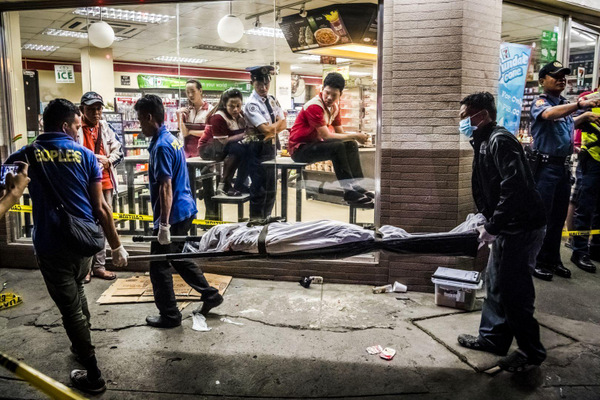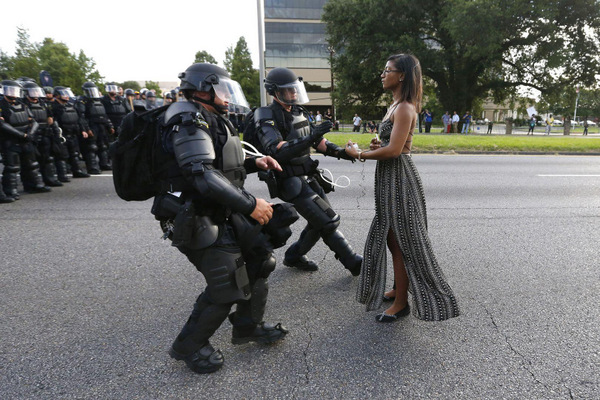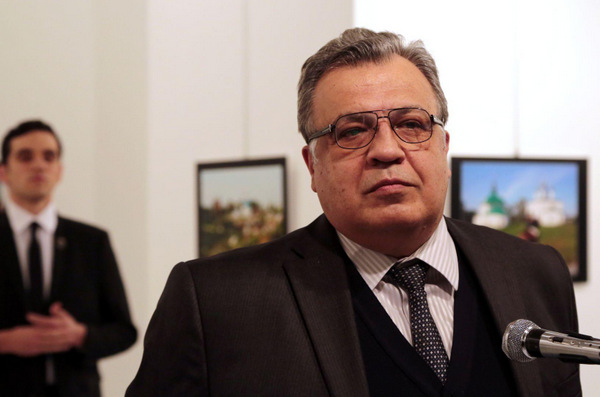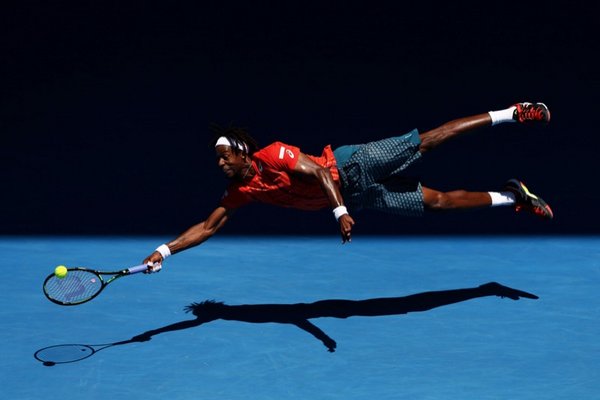World Press Photo Contest has revealed the 2017 winners, with Turkish photographer Burhan Ozbilici winning Photographer of the Year for controversial images showing the assassination of the Russian ambassador to Turkey.
Ozbilici, working for Associated Press, photographed the assassination of Andrei Karlov by chance. He dropped into the opening of a photo exhibition near his house in Ankara, where the ambassador was giving a speech, and brought his camera along to grab archive photos for AP.
During the speech an off-duty police officer/Islamic terrorist, Mevlut Mert Altinas, who was standing in the background, drew his weapon and killed Karlov.
‘I was afraid, but I did not panic,’ Ozbilici told the NY Times. ‘I’m a journalist and I had to stand and do my job even if I got hit or killed. At that moment I tried to represent not just AP, but all good independent journalists.’
Stuart Franklin, jury chairman and Magnum photographer, said the jury was ‘quite split’. He strongly opposed awarding the image the top stop, and voted against it, but ‘narrowly lost the argument’.
Franklin wrote for The Guardian that ‘it’s a photograph of a murder, the killer and the slain, both seen in the same picture, and morally as problematic to publish as a terrorist beheading’.
The premeditated killing was staged at a press conference to gain as much publicity as possible.
Franklin commends Ozbilici for his bravery, composure and skill to take the photograph, which earned the Spot News category win.
But ‘placing the photograph on this high pedestal is an invitation to those contemplating such staged spectaculars: it reaffirms the compact between martyrdom and publicity,’ he argued.
Franklin said Ozbilici’s win is controversial as it ‘amplifies a terrorist’s message through the additional publicity that a top prize attracts.’
Many news outlets limit terrorist messages by not displaying propaganda material released by terrorist organisations.
The Magnum photographer points out it’s the third time an assassination photo has won the contest. The most famous is Eddie Adams’ 1968 photo of a Vietcong suspect being shot at point blank range.
Over on the WPP Facebook page, the Most Liked comment to the announcement also criticised the photo.
‘Guess that’s all this terrorist ever wanted. (To) become famous,’ Bartosz Ciorga commented. ‘Very controversial and somehow disappointing. Taking photos while other people get shot and bleed to death pretty much sums up the overall mediocrity of today’s journalism.’
Lars Boering, WPP managing director, told the NY Times that past winning photos have been ‘more poetic and open to interpretation’, whereas this photo has ‘strong visual representation’.
Another member of the judging panel, Mary Calvert, said the final decision was to award the photographer and not the crime.
‘It was a very, very difficult decision, but in the end we felt that the picture of the year was an explosive image that really spoke to the hatred of our times,’ she said. ‘Every time it came on the screen you almost had to move back because it’s such an explosive image and we really felt that it epitomises the definition of what the World Press Photo of the Year is and means.’
Elsewhere, the photo has been praised.
‘Truly epic. I mean, the guy had just assassinated the Turkish ambassador like seconds before, and then connected that killing to Aleppo, which as we know did not go well for his side,’ Jacqueline from Colorado commented on a NY Times article. ‘There is just so much going on in the picture. It really represents how complicated our world is, and in a very sad and shocking way.’
Who else won?
Two Australian photographers won honourable mentions.
Daniel Berehulak, working for the NY Times, won the General News Stories category for his photo series, They Are Slaughtering Us Like Animals, which explores the brutal killings in the Phillippines from President Rodrigo Duterte’s anti-drug campaign.

Photo: Daniel Berehulak, for The New York Times. Funeral parlor workers carry away the body of Edwin Mendoza Alon-Alon, who was killed by an unknown gunman on the road in front of a 7-Eleven store in Manila, Philippines. Source: WPP.
Berehulak documented 57 homicide victims over 35 days. This is a tiny fraction of the 2000 people slain by police and further 3500 unsolved homicides, likely addicts and dealers killed by vigilante groups, since Duterte took office.
Berehulak is currently based in Mexico City and works as a freelance photographer.

Photo: Daniel Berehulak, for The New York Times. Inmates sleep on a basketball court in an overcrowded prison where they take turns resting on any available spaces at Quezon City Jail, one of the country’s most congested jails. Source: WPP.
Australian Cameron Spencer came second in the Sports Singles category, for his photo of French tennis player Gael Monfils diving for a shot at the 2016 Australian Open in Melbourne.
Surprisingly, Spencer’s photo of Usain Bolt smiling as he looks back at his competition didn’t win.
However German photographer Kai Oliver Pfaffenbach took an almost identical photo, from a slightly different angle, which won third place.
US photographer Jonathan Bachman won first prize for Contemporary Issues Singles for his photo of lone activist Leshia Evans standing her ground at a protest while riot police charge at her in Baton Rouge, Louisiana.

Photo: Jonathan Bachman, Thomson Reuters. Taking A Stand In Baton Rouge. Leshia Evans, a 28-year-old Pennsylvania nurse and mother of one, traveled to Baton Rouge to protest against the shooting of Alton Sterling. Sterling was a 37-year-old black man and father of five, who was shot at close range by two white police officers. Source: WPP.
Nature Singles was won by Spanish photographer Francis Perez, who captured an image of a sea turtle entangled in a fishing net nearby the Canary Islands.
Over 5000 photographers from 125 countries submitted 80,408 images.
Digital manipulation and excessive post-processing is still a problem for World Press Photo. Last year the organisation introduced a code of ethics and required photographers reaching the penultimate round to submit RAW files. Last year 18 percent of finalists were disqualified and Boering suspects the number will be similar this year, but the statistics haven’t been released.






